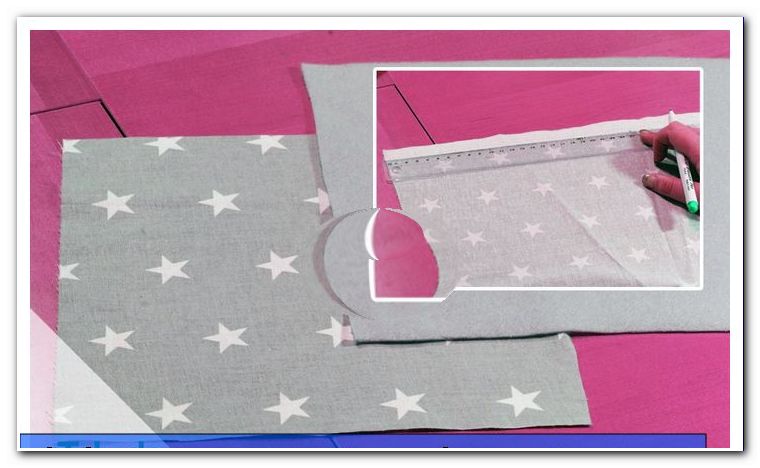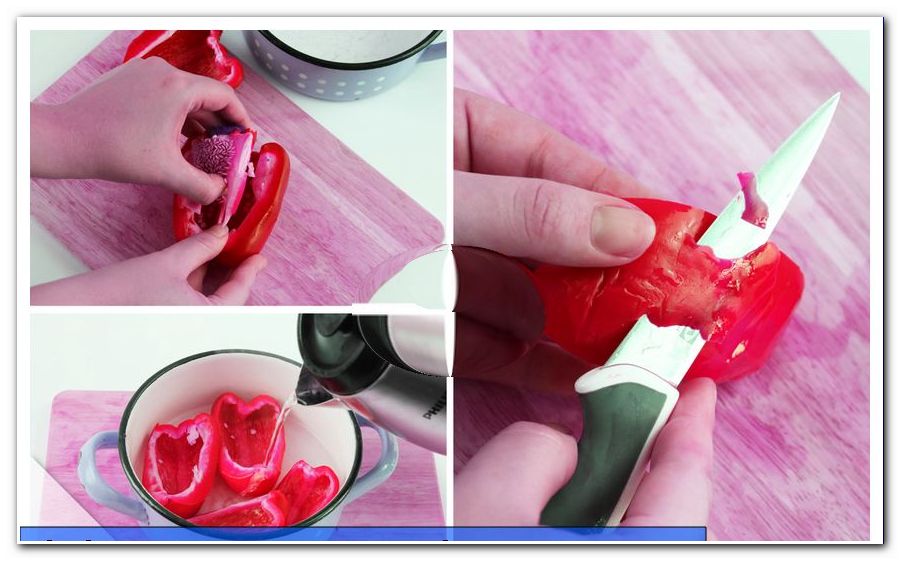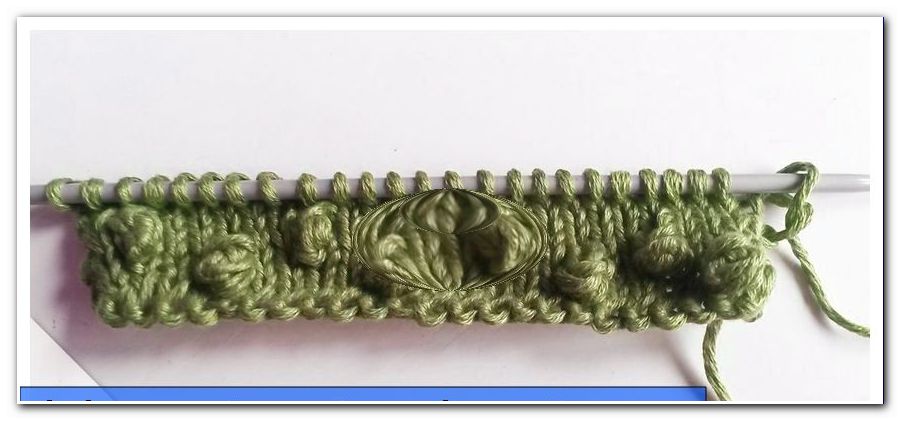Sand parquet yourself - instructions in 9 steps

- Step 1: Prepare your living space
- Step 2: The grinder
- Step 3: The first sanding step
- Step 4: The second grinding step
- Step 5: Repair the parquet
- Step 6: The third grinding step
- Step 7: Corners and edges
- Step 8: Seal the parquet
- Step 9: Thesis
Wood parquet is a handsome and noble flooring, which is often laid in the living area and other spaces of daily life. Unfortunately, wood is a rather soft material, so it can always come to scratches and abrasions. Signs of wear are unavoidable and therefore it is necessary to renovate the parquet floor after a few years. This work can be done easily with our instructions on your own.
If your parquet floor has gotten scratches and dents over the years, be dirty and have discoloration or have become dull, then a renovation is necessary. This renovation can be done easily by our instructions. In just nine steps, your worn parquet floor will be given a new shine. Since parquet has a thickness of 2.5 to 6 mm, you can easily grind it several times without it becoming porous or brittle. With a layer of primer and sealer you give the parquet a protection, so you will enjoy your work longer.
material
- foil
- duct tape
- abrasive paper
- joint cement
- wood care
- Protective material for wood parquet
- Tools
- grinding machine
- vacuum cleaner
- spatula
- hammer
- chisel
- Paint roller or surface brush
Step 1: Prepare your living space
Before the actual work on the parquet, you must prepare the room to be treated completely, so that you no longer have to take care of the furniture or the interior design during the later work. You should remove all pieces of furniture from the room as much as possible. Larger furniture, which can not be removed, should be covered with painter's film and taped well. Grinding creates dust and dirt, which should protect the furniture. The same applies to curtains, curtains or other window and wall decorations. A second step is the removal of the baseboards, so that the sanding process can be carried out over the entire parquet surface. To remove you need a hammer and a chisel. Carefully place the chisel behind the bar and hammer it with the hammer. The skirting thus dissolves from the wall. When screwed on strips, simply remove the screws. In the last step, the parquet must be thoroughly swept off. There should be no metal objects left, which is especially true for the nails of the baseboards, as they could ignite when sanding. In addition, the parquet floor should be smooth and free of disturbing dirt, so at the end should always be sucked thoroughly .

Tip: It can not be ruled out that even wallpaper or ceilings are covered with a dirt film. If they are high-quality products, they should also be covered for safety's sake.
Step 2: The grinder
For sanding parquet you need a sanding machine. Since this is rarely part of the home improvement inventory, a machine must be borrowed and learned how to deal with it. The loan takes place in the specialized trade for do-it-yourself or in the hardware store. Let the application of the machines explain exactly and write down the settings. Also pay attention to a printed manual. If the seller can not do this himself, ask for the replacement of the sanding paper as you will be working with different grain sizes during the parquet treatment. When graining, it is important to know that a small number will cause a coarse cut and a high number a finer cut. Maybe the hardware store has a test plate on which you can try the grinding machine for a short time. This helps you to get to know the device management better. In any case, it should already be said at this point that the device must only hit the ground at full grinding revolutions, otherwise an approach will become apparent.
Tip: Enter the desired grain size (24 and 36) when you are borrowing and you can set this. This saves you from having to change the sandpaper.

Step 3: The first sanding step
The first sanding pass is to completely remove the old paint or oiling the parquet floor. In addition, discoloration is simply ground away. This is a coarse cut, which is carried out with a grain size of 24 and 36. For the first cut, proceed diagonally to the grain . You start the grinder and lower the sandpaper to the ground at full speed. Then you go from floor to floor with the machine. Under no circumstances should you stay in one place for longer, as otherwise depressions will be ground in. Move the grinder as close to the wall as possible. An untreated room will still arise because the machines do not reach the wall. After the sanding step, thoroughly vacuum the parquet floor . There should be no dust left over.
Tip: Put on a respirator mask of filter class P3 and wear protective goggles. As a result, you will not be bothered by emerging dust.
Step 4: The second grinding step
Change the grit of the machine according to the instructions for use and equip the grinder with a finer grain size 60. In the second step, also sand diagonally, but in the opposite direction of the first sanding step. Otherwise, the grinding process does not differ from the first pass. Also, a thorough sucking of dust particles again belongs to the final work of this step.

Step 5: Repair the parquet
Now, before the third and final grinding process starts, you should examine the parquet for defects and cracks. These can be repaired very well even with a small size. For this you need joint kit from the hardware store. Remove a certain amount of 60 grit dust from the vacuum cleaner bag. Mix one part of the dust with one part of the putty and then fill in the fine cracks. Remove excesses of the mass with a spatula and smooth everything. Now make sure that all cracks in the entire parquet floor are treated and the bumps are closed. Allow some time for the putty to harden, taking the time to follow the instructions on the packaging.
Tip: If the hole does not fill well with the mixed mass, increase the amount of putty against the dust, as this will make the mass smoother and run better into the cracks.

Step 6: The third grinding step
In the truest sense of the word follows the fine tuning. Change the sandpaper to a grain size of 100. The last sanding pass is no longer diagonal, but transverse or longitudinal. It makes sense to follow the longest side of the room, which means you have to use fewer lanes and have longer lanes in a row. When grinding, you will notice how the rough surface gets a smooth cut through the fine grain. Vacuuming can be omitted at this point if you go straight to step 7.
Step 7: Corners and edges
Ideally, you have borrowed another machine: the disc sander. This is smaller than the parquet sanding machine and comes better in previously unachieved areas. There are also special edge and corner grinding machines, which allow you to work particularly well on the room walls. For all three special machines, the same procedure applies as with the large parquet grinder. First, perform a sanding step with grain size 24 and 36. Then vacuum the surface and repeat everything with 60 grit. Then you kink possible cracks and finish the fine sanding with 100 grit.
Tip: When ordering, order a plate grinder to negotiate a better price.
Step 8: Seal the parquet
To protect your parquet floor permanently, seal it in a final step. First, however, the floor must be more than thoroughly vacuumed from any dirt and dust . Then the primer follows. You start with the primer on the edge with a wide brush. Then follows the sealing of the entire parquet with a paint roller. It is important to work wet in this job so that no edges are visible. Allow the primer two hours to dry and then apply the sealant first. You should apply about one liter to 10 square meters per seal pass. When sealing, always look at the light over the floor to see if you work all over the place and clean. The seal now takes 8 to 10 hours to dry. For a particularly good result, you should once again go over the parquet with the grinder and a grain size of 120 after the first sealing. This makes the floor particularly smooth. Make sure that you then vacuum the floor again. This is followed by the second layer of the seal, which is applied like the first layer. After another drying phase, a third coat should be applied until the parquet floor is completely sealed.
Tip: When drying the sealer, make sure that no dust is whirled up in the room as it will otherwise stick to the floor.

Step 9: Thesis
The seal now needs sufficient time to harden. During this time, no direct sunlight should hit the parquet floor, otherwise the paint could blister. After 24 hours, you can begin to nail or bolt the baseboards again. When submitting the furniture, make sure that you do not slide the furniture over the seal as it may crack. If carpets belong to your furniture, it makes sense to relocate them only after a long time. For safety's sake, you should wait a full week, as you can only be sure after this time that the seal has hardened and the parquet is ready for occupancy.
Tips for quick readers
- Empty the room as best you can
- Cover heavy furniture well
- Completely unscrew skirting board
- Lend grinding machine and study function
- Free parquet flooring from dirt and dust
- Carry out rough grinding with 24 grit grain
- Repointing with grain 60 diagonal
- Fill cracks with joint cement
- Fine sanding with grain size 100 across
- Sand down corners and edges
- Apply primer
- Apply sealer several times
- Reinstall baseboards
- Give room after curing time




